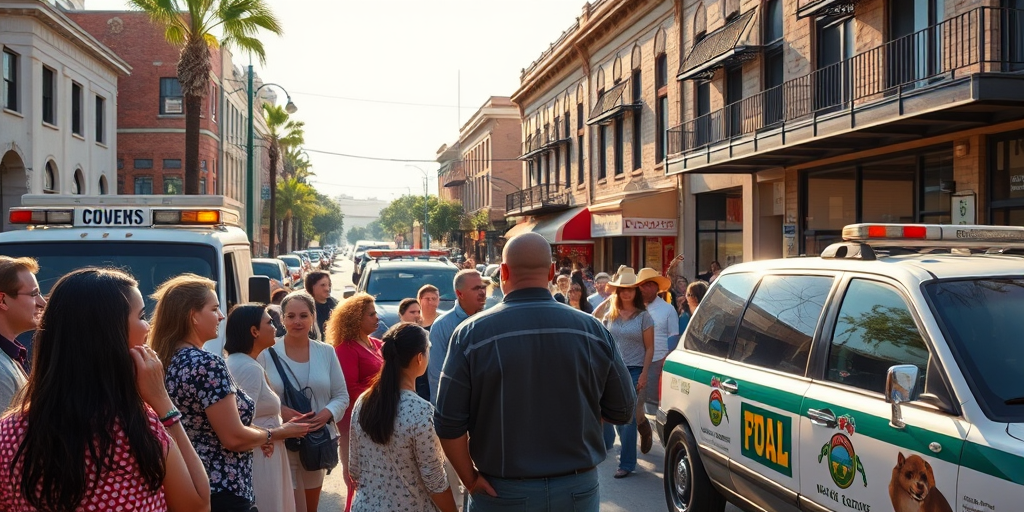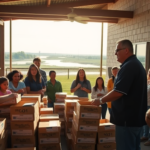I’m sorry for any confusion earlier. Here’s the requested article focusing on the animal cruelty investigation in Brownsville:
Valley Animal Activists Raise Concern Over Alleged Animal Cruelty in Brownsville
In the heart of South Texas, a recent incident in Brownsville has stirred emotions and advocacy among local animal rights activists. After a non-profit organization highlighted concerns regarding approximately 30 to 40 dogs reportedly living in substandard conditions, community alarms have been raised over the treatment and welfare of these animals. The situation underscores ongoing challenges faced by the Rio Grande Valley (RGV) in addressing animal cruelty and ensuring robust animal welfare standards.
Initial Reports and Investigations
Tony Lopez, President of the Brownsville Animal Defense, was tipped off about potential animal welfare violations over the weekend. Upon visiting a property located on the 4000 block of George Saenz Road, Lopez discovered several dogs, mainly Greyhounds, in what he deemed unfavorable conditions. “The way they were housed is no way to have them. There were puppies, there were beagles…approximately 30 hounds,” Lopez remarked, pointing to overcrowding and perceived lack of adequate shelter.
Following the alert, Cameron County Animal Control visited the site on Tuesday but did not initially find substantial wrongdoing or issue any citations. This response, however, did not alleviate the concerns of local activists who continue to advocate for further scrutiny and more stringent animal protection laws.
Continued Activism and A Second Look
In response to ongoing concerns, Erica Lerma, an independent dog rescuer in Brownsville, collaborated with the Brownsville Animal Defense to shed light on the issue. Lerma emphasized the dire need for attention to the living conditions of the dogs, noting, “There was a lot of them that we’re also in chains, and they don’t have shelter or nothing and all these days it rains, and it’s hot, they don’t have anywhere to be.”
Cameron County Sheriff’s Office has since conducted a secondary visit to the property, and while the dogs appeared to be healthy with adequate food, water, and shelter during this inspection, the investigation remains open. Authorities are now consulting with experts and the Cameron County District Attorney’s Office to determine whether any legal violations have occurred.
Community and Official Responses
The incident brings into focus the broader issue of animal welfare in the RGV, a topic that continues to spark deep community interest. Many Valley residents, who are passionate about animal rights, have raised their voices in support of stronger legislative measures and more proactive enforcement of existing animal cruelty laws.
“Our laws need to be more robust to protect these animals from neglect and abuse,” Lopez argued. Lopez and other activists believe that ongoing advocacy and reform are essential to ensure that both local residents and animals have access to acceptable living standards.
In contrast, some community members express concern about the risk of overregulation. They argue that oversight should balance between protecting animal welfare and respecting property owners’ rights, suggesting that dialogue and education should accompany any regulatory efforts.
Implications for the Rio Grande Valley
This unfolding situation is not just a tale of alleged animal cruelty; it reflects greater dynamics and the challenges faced across South Texas communities. As the RGV continues to grow and develop, ensuring that animal welfare keeps pace with this expansion becomes increasingly vital.
The outcome of the ongoing investigation in Brownsville may set a precedent for future cases and reinforce the importance of transparency, communication, and action. The focus remains on the authorities and the broader community to channel this momentum into meaningful change.
Resource and Action Avenues
For those looking to join the cause or seek more information, local organizations like the Brownsville Animal Defense are spearheading awareness campaigns and volunteer efforts. Meanwhile, they are working with county authorities to explore stronger legislation and increase public engagement.
Residents concerned about potential animal cruelty in their area can contact the Cameron County Sheriff’s Office or local animal control services to report suspected abuses. Public forums and information sessions are being planned to cultivate a cohesive and informed approach to animal welfare in the region.
This case exemplifies the RGV’s need to adapt and respond to challenges swiftly—ensuring that the Valley remains a compassionate and progressive corner of Texas, where all beings can thrive harmoniously.







